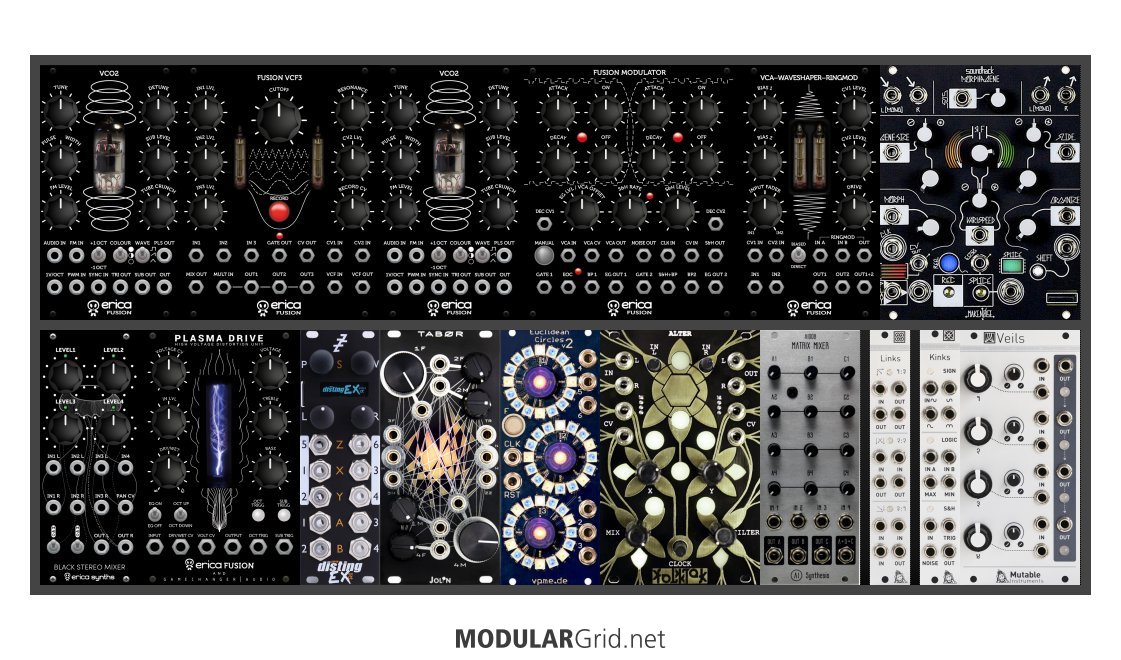This is my rack idea and hoping for feedback or advice as this will be my first delve into full modular after a Doepfer Dark Energy and Moog Grandmother. Is there anything obviois missing or seems out of place?
Also I was looking at a Tiptop Audio Mantis Blue to house which has 2 x 104 HP and 6U. Would you think this would be OK for this rig?
A bit about my purpose - I love lots of different types of sound and music and already have my rig for music production (including a TR8s, OB6, Blofeld, Minitaur, Future Retro Revolution, Grandmother and Dark Energy) so this really would be about having fun and exploration with sound, but could be great to incorporate into my other work possibly - particularly as I would like to use this opportunity to focus more on creating dark ambient, deep vibes as well as on the flipside harder techno/hardcore (but don't necessarily need a system that can do all of that in one).
I have also been listening to a lot of eastern music recently and interested in exploring different rythms.
Although I know it should not be the driving force of decision making I am a very visual person so the look of the modules is almost as important to me as the function - I am immediately attracted to modules such as the Euclidean Circles as well as other interesting designs and colours. I'm not too fussed about getting things that everyone else has (although understand many modules are popular for a reason) but at the same time wouldnt want unecessary or poor value modules.
I was initially thinking of starting with an all in one unit such as the Make Noise B&G system plus which looks great and there are a lot of modules in there which seem strong but I don't think all of them would suit my style. I have however, been very impressed with the videos I have seen of Erica Synths and was particularly interested in their Fusion System 2.
Therefore my rack idea borrows a lot from this system but swapped their delay/flanger with the Folktek as it looks cool. I added the FR transient for drum/loops (althouh I have also been thinking of Plaits and maybe a 3hp Pico Erica Synths drum module instead along with the Euclidian Cicles to help with rhythm. I added a mixer as would like to connect to my external mixing desk to plug into speakers/Daw
It would be great to sync with my external gear but I do have a Beatstep Pro so assume can do via this to sync with extermal drum machine/synths etc. Its not essential but would be fun.

